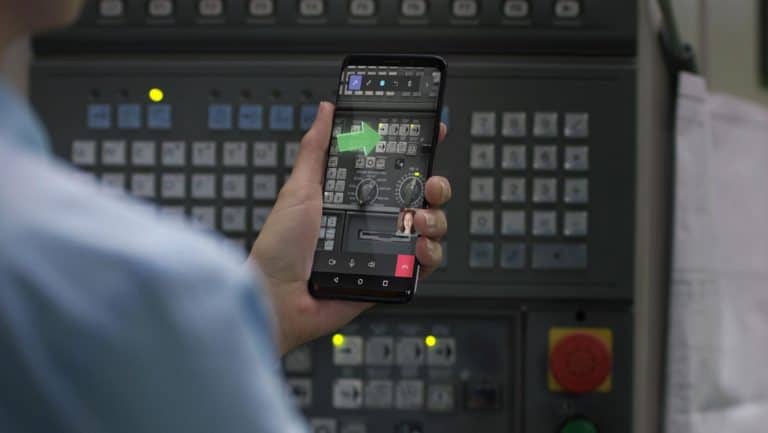Microsoft is pushing Windows Mixed Reality towards mobile phones. This spring, it launches a mobile version of its HoloLens app for remote assistance for Android. A more limited app will also be available for iOS.
Windows Mixed Reality has so far been limited to the HoloLens and a number of VR glasses from manufacturers such as Acer, HP and Lenovo. This spring, Microsoft expands the platform further to mobile phones, with the launch of Dynamics 365 Remote Assist for Android. The company announced this at the Microsoft Business Forware conference in Paris, which was reported by ZDNet.
The remote assistance app is already available for the HoloLens today and lets the wearer share what he or she sees with the built-in camera. The receiver can watch and make notes in a layer over the image (mixed reality) to help the transmitter perform a task. In the translation to mobile, the glasses are replaced by the phone.
Hands-free
The HoloLens app remains the superior version. It allows the wearer to work hands-free and to add notes via hand movements in the air. Remote Assist for Android is a lot more accessible. Companies can use cheap hardware that they already own, instead of having to invest in a HoloLens of more than 3,000 euros.
The big difference with simply filming a problem is the mixed reality layer that Microsoft lays around the world to make it easier to interpret a problem and to propose solutions.
Product Visualize
On iOS, Microsoft launches Product Visualize. The app is intended for sellers of complex products, such as vehicles or heavy machinery. Product Visualize shows a virtual (scale) model of the product in augmented reality. Although several solutions from other developers already exist for this, Microsoft offers the integration with its broader package of Dynamics 365 tools. The app will first be released on iOS and will also be brought to HoloLens at a later date.
The apps are part of Microsoft’s next major feature update for Dynamics 365, which is scheduled for April.
This news article was automatically translated from Dutch to give Techzine.eu a head start. All news articles after September 1, 2019 are written in native English and NOT translated. All our background stories are written in native English as well. For more information read our launch article.